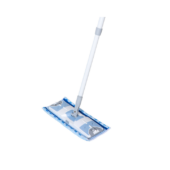Introduction
Every organisation needs resources, suppliers, and labour to succeed, thus the procurement lifecycle is crucial. It is one of the most complicated procedures, from assessing needs to maintaining supplier relationships. Effective procurement assures resource availability, manages vendor relationships, reduces prices, and effectively processes many purchase requests. This detailed tutorial will explain the procurement lifecycle and how to improve efficiency.
Start with an overview.
Definition of procurement cycle
A firm uses the procurement cycle (or lifecycle) to get the goods, software, labour, and services it needs to succeed. Need is the start of the procurement cycle. When the demand is satisfied, payment is made, and quality is confirmed, the procurement lifecycle is complete.
Do all organisations use the same procurement cycle?
Business procurement lifecycles vary. Each firm has its own structure, operations, and rules, which affect the procurement cycle. Despite these differences, most procurement cycles follow a pattern.
5 main procurement phases
We’ll examine each procurement lifecycle point below. For now, consider the five main procurement steps. Each stage belongs to a fundamental phase.
- First: Define needs
- Phase 2: Supplier choice
- Order management, phase 3
- Phase 4: Purchase assessment
- Supplier management, phase 5
First: Define needs
This first phase of the procurement cycle will determine what is needed and when. A purchase request starts this process for most procurement teams. Explore buy requisitions.
Phase 2: Supplier choice
The procurement team must choose a supplier in the second step. Procurement teams usually invite vendors that fulfil the company’s vendor requirements to bid on the acquisition. After finding a match, procurement issues a purchase order.
Order management, phase 3
After a purchase order, order management begins. Initial steps include tracking order status to guarantee timely delivery. Three-way matching will verify that the products or services received match the order. This helps accounts payable make timely, accurate payments.
Phase 4: Purchase assessment
Next, assess if the supplier’s goods or services matched expectations. Our products and services will be assessed for quality, delivery, and commercial success. These procurement lifecycle insights will shape future procurement strategies.
Supplier management, phase 5
Finally, the procurement team will decide whether to utilise the supplier again or find alternatives. Supplier relationships affect costs and service quality, thus maintaining them is crucial to the procurement cycle.
14 procurement steps
After painting the procurement life cycle in broad strokes, let’s hone in on each phase.
- Define need
- Analyse markets
- Define specs
- Choice of supplier
- Develop supplier strategy
- RFI
- RFQ
- Choose target providers
- Choose vendor
- Manage orders
- PO issue
- Get products or services
- Three-way matching
- Payment
- Management of vendors
- Assess supplier performance
- Stay with vendors
1. Define need
Understanding your business’s needs and when it requires them starts the procurement cycle. Most procurement teams use purchase requests from throughout the company to discover these needs. Such enquiries are called purchase requisitions.
Every purchase request should have the same information and be simplified into a single source, especially when they can be filed through official and informal channels. For instance, when the procurement staff gets requests by standardised form vs email.
Purchase requests usually need purchasing manager or department head approval. Discover purchase requisition approvals.
Incoming purchase requests should be detailed. This will simplify the next processes and ensure procurement finds what is needed.
2. Analyse markets
You must conduct market research to make an informed purchase. This research will examine the recognised requirement, the accessible choices, and the expected cost.
3. Define specs
After identifying the requirement and doing market research, it’s time to narrow down what you want to buy. Composition, size, and quantity are important for materials. If you require labour, you must establish the skill set, hours, and sort of job.
Software specs must outline capabilities, features, and integrations. Services will have different needs.
4. Develop supplier strategy
Procurement teams often have many supplier alternatives. Supplier strategy helps manage the following phases of the procurement cycle.
Here are some questions the supplier strategy will address:
- How many providers will you consider?
- What is the contract negotiation and award timeline?
- Which vendors most likely match company needs?
- You have relationships with which suppliers?
- New suppliers: what’s their reputation?
5. Request RFI
Supplier selection begins with an RFI. In this step, the procurement team asks potential vendors to provide crucial information to determine their suitability.
6. Choose vendors
The procurement team will restrict its supplier selection based on RFI replies and other factors to find the best match. Delivery time, capacity, and conformance with business rules, values, and compliance needs may be criteria.
7. RFQ
Suppliers who fulfil initial requirements will be contacted for quotes. In this competitive bid procedure, the procurement team may assess whether supplier satisfies quality and quantity requirements and can deliver products or services within budget.
8. Choose vendor
After reviewing all quotations, the procurement team will choose a contractor.
9. PO issue
After choosing a vendor, the procurement team will place a purchase order for items, services, or labour. A formal purchase order specifies all buying details.
10. Get products or services
The buyer will receive products or services. The packing slip or other paperwork should be verified against the delivery. This is an important procurement life cycle stage and part of the three-way matching process.
11. Match three ways
The buyer receives an invoice from the provider after delivery. This invoice will be checked against the purchase order and delivery receipt to avoid overpaying.
12. Pay
If the three-way matching procedure works and the invoice is accepted, the buyer pays. Early payment reductions are often offered under purchasing arrangements. Late payments may incur fines or other consequences.
13. Assess supplier performance
Post-buy, the procurement team will analyse the purchase and vendor experience. At this step of the procurement cycle, the focus is on whether the seller met specifications and whether the items or materials matched expectations.
14. Stay with vendors
The procurement team will note that the vendor is a favoured partner and keep in touch for future purchases if they deal with them. If the procurement team is unhappy with the vendor’s performance or quality, they may switch suppliers in the future.
Conclusion
Organisations that want to improve buying and supplier relations must understand the procurement lifecycle. Businesses may satisfy operational goals, acquire high-quality goods and services, and save money by carefully following each step—from defining needs and selecting suppliers to managing orders and reviewing performance. Structured procurement may boost efficiency, vendor relations, and corporate performance. By mastering the procurement process, firms can confidently manage procurement complexity and accomplish strategic goals.

















